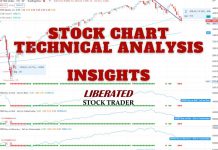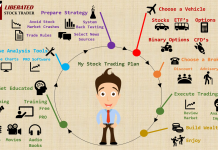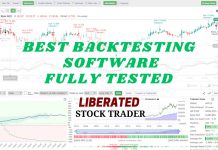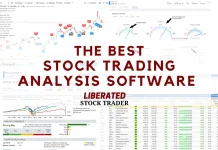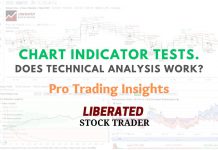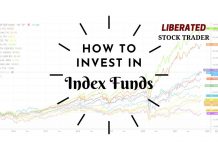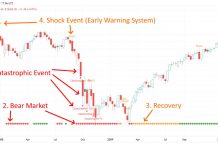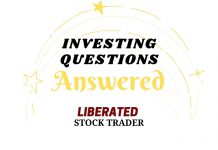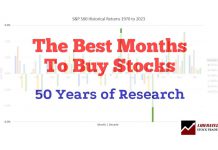The Short Sale Rule (SSR), also known as the uptick rule, is a regulatory measure in the stock market designed to reduce excessive downward pressure on stock prices caused by short selling.
☆ Research You Can Trust ☆
My analysis, research, and testing stems from 25 years of trading experience and my Financial Technician Certification with the International Federation of Technical Analysts.
When a stock’s price declines significantly, the Short Sale Rule triggers a temporary restriction that prevents investors from shorting the stock unless the price is above the current highest bid.
This measure aims to stabilize financial markets during volatile trading sessions and protect listed corporations from potentially manipulative trading practices.
Initially established after the market crash of 1929, the uptick rule underwent several transformations before being reinstated as SSR in 2010 in response to the volatility of the 2008 financial crisis.
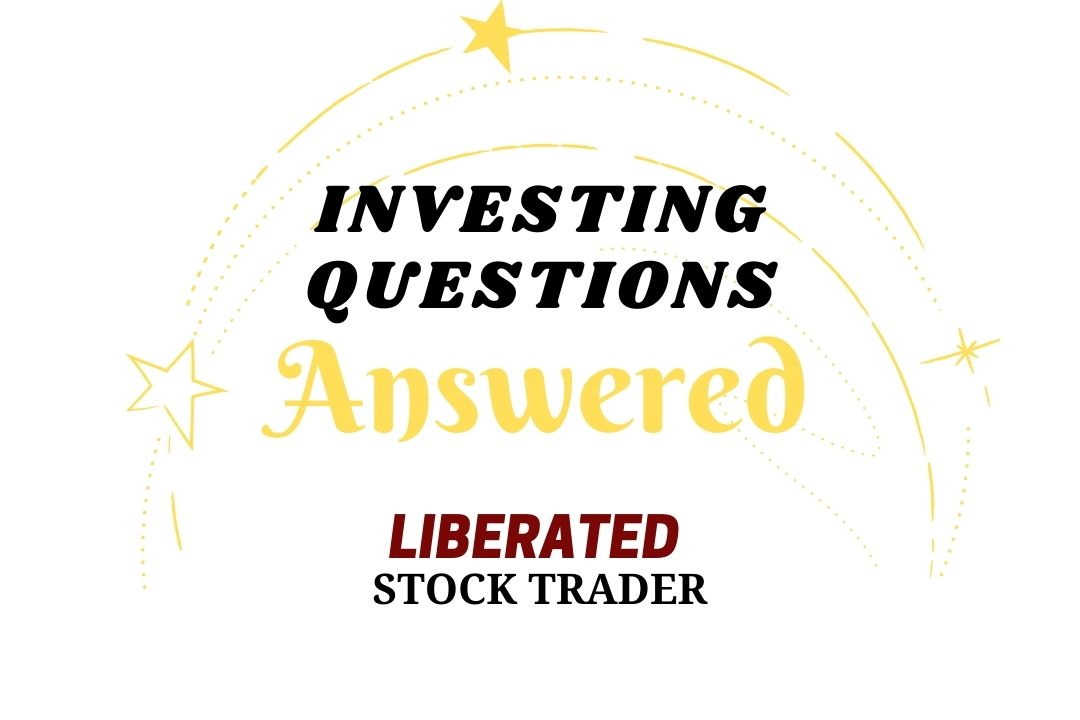
The SSR invokes specific operational mechanics that dictate that short selling is restricted to price levels above the current best bid after a 10% drop in a stock’s price from the previous day’s close.
This rule ensures a level playing field among investors, mitigating the potential for downward spirals triggered by aggressive short selling.
Our original trading research is powered by TrendSpider. As a certified market analyst, I use its state-of-the-art AI automation to recognize and test chart patterns and indicators for reliability and profitability.
✔ AI-Powered Automated Chart Analysis: Turns data into tradable insights.
✔ Point-and-Click Backtesting: Tests any indicator, pattern, or strategy in seconds.
✔ Never Miss an Opportunity: Turn backtested strategies into auto-trading bots.
Don't guess if your trading strategy works; know it with TrendSpider.
Historical Context
Understanding the Short Sale Rule requires a look back at significant events that shaped its inception, importance, and evolution within securities regulation.
Origins of the Short Sale Rule
The Securities and Exchange Commission (SEC) established the Short Sale Rule, formerly known as the Uptick Rule or Rule 10a-1, in 1938. This rule aimed to curb speculative short-selling, which could have exacerbated price declines after the Great Depression.
Impact of the Great Depression
During the Great Depression, the stock market crash of 1929 played a critical role in prompting regulatory measures. A widespread belief was that aggressive short-selling contributed to the market’s volatility during this period. This led regulators to seek measures like the Short Sale Rule to prevent compounding negative market spirals.
Development Through the Financial Crisis
Changes to the Short Sale Rule continued, reflecting the financial industry’s evolution. It was repealed in 2007, just ahead of the Global Financial Crisis.
However, the SEC reintroduced a modified version of the rule in 2010—often referred to as Rule 201 or the Alternative Uptick Rule—in response to the market crash of 2008 and the instability that followed.
This revised rule only activates a short sale restriction when a stock’s price drops by 10% or more from the previous day’s closing price.

Global Financial Analysis for Free on TradingView
Short Sale Fundamentals
Short selling is a strategic approach to stock trading in which investors aim to profit from a stock’s price decline. This section will guide you through the basics of short selling, from its definition to the mechanics and roles of the key participants facilitating the process.
Definition of Short Selling
Short selling, often referred to as shorting, involves the sale of shares that the seller does not currently own but has borrowed from a broker. Investors short-sell when they anticipate that the price of a stock will decline, allowing them to buy back the shares at a lower price and profit from the difference.
Short Selling Mechanics
The mechanics of short selling are straightforward yet involve several key steps. An investor borrows shares from a lender through their broker, which are then sold. If the stock’s price drops, the investor buys back the shares at the lower price and returns them to the lender, and the profit is the difference minus any fees.
- Borrow Shares: Borrowing through a broker, who locates shares to lend.
- Sell Shares: Selling the borrowed stock in the market.
- Repurchase Shares: Buying back shares, hopefully at a lower price.
- Return Shares: Returning the shares to the lender and pocketing the difference.
Roles of Brokers and Lenders
Brokers and lenders are pivotal in the execution of a short sale. Lenders, typically large investment firms or other brokers, provide the shares needed for shorting, while the brokers act as intermediaries facilitating the transaction.
The broker is responsible for ensuring the borrowed shares are returned to the lender and managing the sale and subsequent repurchase transactions on behalf of the investor.
The Uptick Rule
The Uptick Rule is a regulatory measure to promote market stability and fairness by controlling the price movement during short sales. It comes in two main forms: the original regulation and the revised version, the Alternative Uptick Rule.
Original Uptick Rule
The original Uptick Rule, established by the Securities and Exchange Commission (SEC) in 1938, mandated that short selling a stock was only permissible at a price above the last sale price, or an “uptick.” This was crafted to prevent excessive downward price pressure caused by short sellers.
Alternative Uptick Rule
Following the global financial crisis, the SEC introduced the “Alternative Uptick Rule,” also known as Rule 201. It restricts short selling on a stock that has dropped more than 10 percent from the previous day’s closing price. When triggered, this rule ensures that shorting is only allowed at a price above the current highest bid, intending to curb short selling on a stock undergoing significant price declines.
Regulatory Measures
In stock trading, regulatory measures are vital for maintaining market integrity. They aim to prevent market manipulation and protect investors. Several key regulations have been implemented over time to oversee the practice of short selling.
Securities Exchange Act
The Securities Exchange Act of 1934 established the Securities and Exchange Commission (SEC) to enforce federal securities laws.
One critical aspect of this act is its provisions related to short selling, a powerful tool for traders that can also contribute to market volatility if left unchecked.
The act allows the SEC to regulate short sales and ensure fair trading practices.
Regulation SHO
Regulation SHO was introduced by the SEC in 2004 to update the rules governing short sale practices, emphasizing transparency and accountability.
It sets out the requirements for locating and delivering borrowed securities to prevent “naked” short selling, where the seller has not borrowed or arranged to borrow the securities in time for settlement.
This regulation also includes the “locate” and “close-out” requirements, which aim to address failures to deliver securities.
SEC Rule 201
Implemented in 2010, SEC Rule 201, also known as the short sale price test restriction, restricts short sales when a stock’s price has dropped more than 10% from the previous day’s closing price. This rule prevents short selling that could exacerbate a stock’s price decline.
It requires trading centers to enforce a price test based on the national best bid to ensure short selling occurs in a manner that does not lead to abusive practices or undue downward price pressure on a stock.
The Short Sale Rule
In the landscape of stock market regulations, the Short Sale Rule stabilizes equity prices during periods of significant volatility. This regulatory measure is designed to curb potential downward spirals in stock prices triggered by short selling.
Short Sale Restrictions
The short sale restriction (SSR) is a regulatory safeguard that prevents short sales from exacerbating a stock’s price decline. Specifically, it prohibits initiating a short sale when the price of a stock is in a downward trend. SSR is activated when a stock’s price drops by more than 10% from the previous day
Operational Mechanics
In short selling, it is crucial to understand the dynamics of borrowing shares, navigate the interplay of short and long positions, and recognize how market volatility influences regulatory limits.
Borrowing and Returning Shares
Short selling requires an investor to borrow shares before selling them on the open market. This process begins with the investor arranging to borrow shares from a brokerage, which holds them in custody.
Borrowed shares must eventually be returned, which is done by purchasing the equivalent number of shares later to close out the short position.
Short Position and Long Position
- A short position is opened when an investor sells the borrowed shares, anticipating a decline in stock price.
- A long position, in contrast, involves buying shares outright with the expectation that the stock price will rise.
Short sellers profit if they can buy back the shares at a lower price than the selling price, thus returning the borrowed shares and pocketing the difference.
Market Volatility and Limits
Market volatility can greatly impact the dynamics of short selling. Regulatory measures like limit orders can be used to manage risk in volatile conditions. Investors may set limit orders to specify the maximum or minimum price at which they are willing to buy or sell shares, thus imposing self-regulatory limits amid unpredictable market movements.
Chart, Scan, Trade & Join Me On TradingView for Free
Join me and 20 million traders on TradingView for free. TradingView is a great place to meet other investors, share ideas, chart, screen, and chat.
Market Dynamics
While established to provide stability, the Short Sale Rule (SSR) significantly interacts with the intricate balance of market dynamics. It leverages specific market mechanisms to mitigate excessive downward price momentum and ensures a more orderly trading environment.
Circuit Breakers and Triggers
Circuit breakers serve as a vital protective mechanism in financial markets. They are designed to temporarily halt trading on a security when extreme price declines occur. The SSR acts as a circuit breaker for individual stocks, triggering when a stock’s price falls at least 10% below the previous day’s closing price. This rule is automatically activated, constraining the ability to short-sell and attempting to curb further immediate spirals in price.
Price Control and Liquidity
Within the spectrum of market dynamics, SSR aims to exert price control during tumultuous trading periods. By restricting short sales on a declining stock, SSR effectively reduces the potential for the share price to plunge further due to short-selling pressure.
Such regulation indirectly maintains liquidity, ensuring sellers and buyers can execute trades more readily without extreme market price volatility. Additionally, the rule is crafted to prevent sharp declines within a single trading day, promoting a more balanced and stable market environment.
Investor Considerations
In stock trading, the Short Sale Rule (SSR), also known as the alternative uptick rule, imposes critical checks that investors must be aware of when planning their trading strategies. It manipulates timing and can sway investor confidence, directly impacting profitability.
Risk and Profitability
Implementing the SSR fundamentally alters the risk profile of short-selling activities. Since the SSR is activated when a stock drops by 10% or more from the previous day’s close, investors can no longer short-sell a stock on a downtick. This can protect an investor from overstated losses in a rapidly declining market, which may shore up investor confidence during turbulent times. Conversely, the rule can limit the potential for profitability in certain trading strategies that depend on the ability to short-sell without restriction.
- Reduced Liquidity: The SSR can reduce market liquidity by restricting short-selling opportunities.
- Decreased Volatility: There may be decreased price volatility in SSR-triggered stocks, which can affect profit margins.
Timing and Strategies
An investor’s ability to navigate the timing of trades becomes more critical under SSR. The rule is in effect for the remainder of the trading day and can extend to the end of the next trading day, demanding careful consideration of entry and exit points for trades. Adapting trading strategies to accommodate SSR is essential for sustaining profitability. Traders may need to explore long positions or other derivatives as alternatives to short-selling strategies when SSR is in effect.
- Strategic Adjustment: Investors might pivot to other strategies like options trading to sidestep the SSR restrictions.
- Anticipatory Moves: Astute investors will monitor stocks nearing a 10% decline and plan their trades accordingly to avoid being caught off-guard by the activation of SSR.
Controversies and Challenges
The SSR, or Short Sale Rule, has been at the heart of various controversies and challenges within the financial markets. These stem mainly from its influence on price movement and the potential for stock price manipulation.
Pitfalls of Short Sales
Short sales can exert significant downward pressure on a stock’s price, making it susceptible to rapid declines during periods of market stress. The controversy arises over whether this exacerbates volatility or is a necessary aspect of market efficiency.
There’s also the practice of naked short selling, where sellers fail to borrow shares before selling them, which has been accused of contributing to undue pressure on stock prices.
Naked Short Selling
Naked short selling is particularly contentious. Selling shares not owned or confirmed to be borrowable can artificially increase the supply of stock, thus distorting the natural price movement. It is often seen as a form of stock price manipulation. Efforts to restrict short selling, including the SSR, aim to mitigate the potential damage from such activities. However, opponents argue that such restrictions can impede market liquidity and price discovery.
Impact Analysis
The Short Sale Rule (SSR) is designed to stabilize market conditions, but its implications vary across different market participants and stock classifications.
Effects on Small-Cap Stocks
Small-cap stocks can be particularly susceptible to volatility due to their lower market capitalization. The implementation of SSR often acts as a damping mechanism against rapid declines by restricting short sales when a stock has fallen by 10% from the previous day’s close.
This limitation can mitigate panic selling, making it harder for a short squeeze to occur, which is especially crucial for smaller companies that can be heavily impacted by large speculative trades.
While intended to protect from excessive downward pressure, it may also temporarily reduce liquidity for these smaller stocks as trading activities adjust to the rule.
Influence on Day Traders and Speculators
Day traders and speculators frequently thrive on high volatility and market momentum to generate profits. However, SSR imposes certain constraints on these traders’ strategies by preventing them from placing short-sale orders on a downtick for the specified period.
This can lead to reduced trading opportunities for day traders, who must now navigate around these regulations, often resorting to more cautious and deliberate trading approaches.
For speculators, the rule acts as a safeguard against potential market abuses, as it checks aggressive short-selling that might exacerbate a stock’s downward spiral, making the market environment more challenging yet possibly fairer.
Conclusion
The Short Sale Rule (SSR) is a regulatory measure designed to foster market stability and maintain investor confidence during significant downturns. By restricting short sales on securities that have plummeted by 10% or more from the previous day’s close, the SSR aims to prevent further downward price spirals.
This rule, which stays in effect until the end of the next trading day, applies to all equity securities, whether traded on exchanges or over-the-counter markets.
Investors are encouraged to recognize the influence of the SSR on trading strategies. With the rule in place, the potential for excessive market volatility caused by aggressive short-selling practices is minimized. Regulatory actions such as the Short Sale Rule are instrumental in these efforts, serving as a buffer against potential market abuse.
FAQ
What are the conditions that trigger the Short Sale Rule?
The Short Sale Rule is activated when a stock's price declines by 10 percent or more from the previous day's close. This measure is designed to prevent excessive downward price pressure on a security through short selling.
How long does the Short Sale Restriction remain in effect?
After activation, the Short Sale Restriction remains in effect until the end of the following trading day, providing a temporary limit on further short selling.
What securities are included in the NYSE short sale restriction?
The NYSE short sale restriction list includes all equity securities, whether they are traded on an exchange or over-the-counter. This ensures a broad application of the SSR to various types of securities.
Can are the core principles of SSR trading rules?
The core principles of SSR trading rules are to prevent short selling from contributing to the decline of a security's price and to promote market stability by allowing long buyers to dominate the price discovery process during a significant drop.
How does the Short Sale Rule 201 impact market participants?
The Short Sale Rule 201, also known as the Alternative Uptick Rule, impacts market participants by restricting the ability to execute a short sale at or below the current best bid when a stock's price has dropped more than 10 percent in one day.
What updates have been made to the SEC short sale regulations?
Updates to the SEC short sale regulations include modifications to address concerns about market volatility and the role of short selling in rapid price declines, seeking to balance market efficiency and investor protection.


